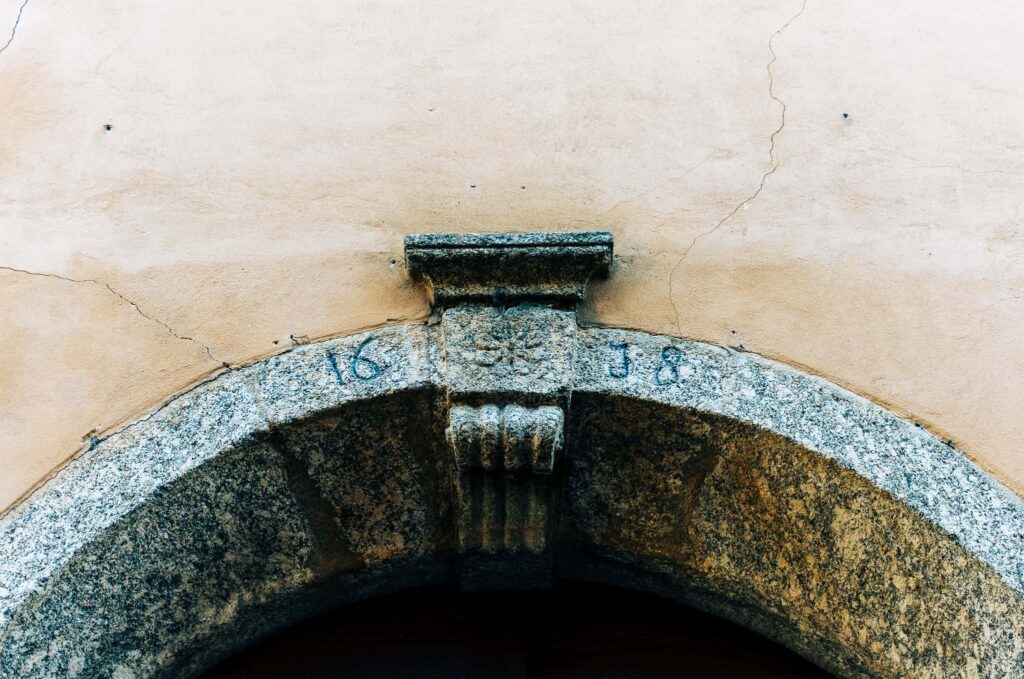The building, commonly called “la Mantegazza”, stands prominently in Garlate’s historical centre, resembling an 18th-century palazzetto constructed around a quadrangular court. It is accessed through a large granite portal bearing the date “1688” engraved on the key. It is evidently a reconstruction of earlier building units, a telltale sign being the tower, situated in the north-eastern corner, the axis of which noticeably deviates from that of the court and main façade.
The former buildings were coordinated towards the ancient via Ducale, featuring a slightly concave, two-storey façade, with the portal and a sequence of sizeable windows framed by beautiful stonework sills and plasterwork. On the main side, the court boasts a portico comprising three sections, supported by exposed stone pillars. The various rooms opened up along the perimeter of the court, with the entrances accentuated by lintels, friezes, stone caps and decorative mullions in masonry. Subsequent changes and comprehensive renovations in the 17th century are evident today. Most noticeably, the entire building was elevated by one floor towards the late 19th century by the Swiss Abegg family. This additional level served as a “gallery” and service quarters, while other rooms in the building (such as the dormitories) were refurbished for similar purposes.
Adorning the façade overlooking via Risorgimento is a 15th-century fresco portraying the Annunciation. This artwork has maintained the delicate and chromatic qualities emblematic of the late Gothic period or “international Gothic” style, particularly prevalent in northern Italy during the first half of the century. Positioned at the entrance, the Annunciation serves as a symbol of goodwill to those who enter. This captivating fresco was unveiled during the building’s exterior renovation in 1979.
The silk industry, which flourished in the 19th century, was not only a source of employment for locals but also attracted people from neighbouring villages, especially women. Women who came “from afar”: the valleys of Bergamo, Lodigiano, Friuli. They resided in the building, which thus took its name “Cà di furestéri”, serving as both a refectory and dormitory. Several decades ago, the southern wing was rebuilt, creating four floors of accommodation. The origin of the building and of its earliest structures remains uncertain. By the mid-18th century, the building had come under ownership of the ducal Maraviglia Mantegazza family, Milanese nobles who held the title of senator and Marquis of Liscate, which explains its popular appellation. It is presumed that the original structure, dating back to the late 15th century, the traces of which are overlaid in the 17th-century modifications, once belonged to the noble D’Adda family.


